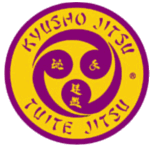 W
WChitō-ryū (千唐流) is a style of karate founded by Dr. Tsuyoshi Chitose , (1898-1984). The name of the style translates as: chi (千) - 1,000; tō (唐) - China; ryū (流) - style, school, "1,000 year old Chinese style." The character tō (唐) refers to the Tang Dynasty of China. The style was officially founded in 1946.
 W
WGōjū-ryū (剛柔流), Japanese for "hard-soft style", is one of the main traditional Okinawan styles of karate, featuring a combination of hard and soft techniques. Both principles, hard and soft, come from the famous martial arts book used by Okinawan masters during the 19th and 20th centuries, the Bubishi. Gō, which means hard, refers to closed hand techniques or straight linear attacks; jū, which means soft, refers to open hand techniques and circular movements. Gōjū-ryū incorporates both circular and linear movements into its curriculum, combining hard striking attacks such as kicks and close hand punches with softer open hand circular techniques for attacking, blocking, and controlling the opponent, including joint locks, grappling, takedowns, and throws.
 W
WSosui Ichikawa, was a Japanese martial artist born in Ueno, Tokyo, Japan who was the 4th Sōke of the Zen Nihon Goju-Ryu Karate-do Renmei (全日本剛柔流空手道連盟) and founder of the Sosuikan (素水館). He would teach Goju-Ryu karate while still doing his research and development. Ichikawa's studies were often focused on the Bubishi (武備志), and would ultimately come to write his texts, the Kōshu-do (交手道) and other documents. Sosui Ichikawa was accepted as Hanshi (範士), Jūdan (十段) in 1983 by the Okinawan Karate-Do Renmei.
 W
WHojo undō (補助運動) is a Japanese language term, translated as "supplementary exercises", that refers to conditioning exercises used in martial arts, especially in karate. Hojo undō training was designed to develop ambidextrous physical strength, stamina, muscle coordination, speed, and posture. This style of training uses simple, traditional devices made from wood and stone.
 W
WThe makiwara (巻藁) is a padded striking post used as a training tool in various styles of traditional karate. It is thought to be uniquely Okinawan in origin. The makiwara is one form of hojo undō, a method of supplementary conditioning used by Okinawan martial artists.
 W
WMotobu-ryū (本部流) is a school of karate founded by Choki Motobu in 1922. The official full name is Nihon Denryu Heiho Motobu Kenpo.
 W
WRyu-te is an Okinawan martial art founded by Seiyu Oyata . The word Ryū-te is a shortened form of Ryūkyūte. Ryukyu is the original name of Okinawa prior to it becoming part of Japan. Before 1995, Oyata referred to his style as Ryukyu Kempo (琉球拳法), but eventually renamed it "Ryu-te" as Ryukyu Kempo was a reference to all styles originating in Okinawa rather than to any one particular style. Ryu-te emphasizes effective self-defense while deliberately minimizing the harm to the opponent. Its practitioners consider Ryu-te neither a sport nor a form of exercise, but rather a method of training the body and mind for the betterment of mankind.
 W
WShōrei-ryū is a style of Okinawan karate and is one of the two oldest karate styles, alongside Shōrin-ryū. It was developed at the end of the 19th century by Higaonna Kanryō in Naha, Okinawa.
 W
WOkinawa Karate-Dō Shōrin-ryū Kishaba Juku, also called, familiarly, Kishaba Juku, is Chokei Kishaba's private academy of the Matsubayashi-ryu style of Okinawan Karate. The Kishaba Juku was officially founded on February 1, 1998, but had been in existence as an informal karate study group since the late 1970s.
 W
WUechi-Ryū is a traditional style of Okinawan karate. Uechi-Ryū means "Style of Uechi" or "School of Uechi". Originally called Pangai-noon, which translates to English as "half-hard, half-soft", the style was renamed Uechi-Ryū after the founder of the style, Kanbun Uechi, an Okinawan who went to Fuzhou in Fujian Province, China to study martial arts and Chinese medicine when he was 19 years old.
 W
WWadō-ryū (和道流) is one of the four major karate styles and was founded by Hironori Otsuka (1892-1982). The style itself places emphasis on not only striking, but tai sabaki, joint locks and throws. It has its origins within Tomari-te karate, but was also influenced by Shito-Ryu and Shotokan; and was also influenced by Ju-jitsu.